- Home
- Ursula K. Le Guin
The Unreal and the Real - Vol 1 - Where On Earth
The Unreal and the Real - Vol 1 - Where On Earth Read online
Table of Contents
Introduction
Brothers and Sisters
A Week in the Country
Unlocking the Air
Imaginary Countries
The Diary of the Rose
Direction of the Road
The White Donkey
Gwilan’s Harp
May’s Lion
Buffalo Gals, Won’t You Come Out Tonight
Horse Camp
The Water Is Wide
The Lost Children
Texts
Sleepwalkers
Hand, Cup, Shell
Ether, OR
Half Past Four
Record of First Publication
About the Author
The Unreal and the Real
Selected Stories of
Ursula K. Le Guin
Volume One
Where on Earth
Small Beer Press
Easthampton, MA
This is a work of fiction. All characters and events portrayed in this book are either fictitious or used fictitiously.
The Unreal and the Real: Selected Stories of Ursula K. Le Guin Volume 1: Where on Earth
Copyright © 2012 by Ursula K. Le Guin
(ursulakleguin.com).
All rights reserved.
Page 285–288 of the printed edition function as an extension of the copyright page.
Cover design © 2012 by John D. Berry (johndberry.com).
Cover art: “Wildcat” © 2010 by Paul Roden & Valerie Lueth
(tugboatprintshop.com)
Small Beer Press
150 Pleasant Street #306
Easthampton, MA 01027
www.smallbeerpress.com
www.weightlessbooks.com
[email protected]
Distributed to the trade by Consortium.
First Edition 1 2 3 4 5 6 7 8 9 0
Library of Congress Cataloging-in-Publication Data
Le Guin, Ursula K., 1929-
[Short stories. Selections.]
The unreal and the real: selected stories of Ursula K. Le Guin. -- First edition.
volumes cm
ISBN 978-1-61873-034-3 (v. 1: cloth)
ISBN 978-1-61873-035-0 (v. 2: cloth)
ISBN 978-1-61873-036-7 (v. 1: ebook)
ISBN 978-1-61873-037-4 (v. 2: ebook)
1. Science fiction, American. 2. Fantasy fiction, American. I. Title.
PS3562.E42A6 2012
813’.54--dc23
2012036206
The Unreal and the Real: Selected Stories Volume One: Where on Earth
isbn: 978-1-61873-034-3 (trade cloth); 978-1-61873-036-7 (ebook)
The Unreal and the Real: Selected Stories Volume Two: Outer Space, Inner Lands
isbn: 978-1-61873-035-0 (trade cloth); 978-1-61873-037-4 (ebook)
Text set in Centaur.
Paper edition printed on 50# Natures Natural 30% PCR Recycled Paper in the USA.
Introduction
Choosing and Dividing
I begged people—editors, friends, third cousins once removed—to help me select stories for this collection, but nobody would. So all the credit for good choices and all the blame for bad ones is mine. If something you rightfully expected to find here isn’t here, I’m sorry. I had to leave out a lot of stories, because I’ve written a lot of them.
The first way I found to reduce the mob to a manageable size was: limit it to short stories. No novellas—even though the novella is my favorite story-form, a lovely length, in which you can do just about what a novel does without using all those words. But each novella would crowd out three, four, five short stories. So they all had to be shut out, tearfully.
There were still way too many stories, so I had to make arbitrary restrictions. I mostly avoided stories closely tied to novels, set on Gethen or on Anarres, etc.—and stories forming an integral part of story-suites, where the pieces are linked by characters, setting, and chronology, forming an almost-novelistic whole. But “May’s Lion” is closely tied to Always Coming Home, and three of the stories from Orsinian Tales form a loose, many-decade sort of suite…Oh well. Consistency is a virtue until it gets annoying.
So there I was with enough stories, still, to make a book about the size of the Shorter Oxford Dictionary. I therefore developed extremely scientific and methodical criteria for my choices.
The first criterion was: Do I like the story?
The answer was almost invariably Yes, so it wasn’t much of a criterion. I refined it to: Do I really like the story a lot? That worked better. It resulted in a very large pile of stories I liked a lot.
I then exercised the next criterion: How well would this story work with all the others? which was very difficult to put into operation, but did eliminate some. And by then a further principle of selection had appeared as a question: Should I put a story in this collection because I think it has been overshadowed, has received less attention than it maybe deserved?
That’s a tricky call. Luck, fashion, literary awards, and other uncontrollable factors play a part in when and whether a story gets noticed. The only near certainty is that the more often it’s reprinted, the more often it will be reprinted. Familiarity sells. “Nine Lives” was republished more often than any of my other stories for years, until “The Ones Who Walk Away from Omelas” (after a slowish start despite winning the Hugo Award) took a handy lead and is still galloping happily along like Seabiscuit.
I did decide to include some stories partly because I wanted to bring them back into the light. Most of them, but not all, are in this first volume.
And here we arrive at the next choice I had to make, once I had chosen all the stories I wanted in the collection. They were to go in two volumes. How should I divide them?
At first I thought I should simply put them in chronological order as written. I tried it, and didn’t like the effect. I ended up sorting them into the two parts I call Where on Earth and Outer Space, Inner Lands.
I think the two titles are sufficiently descriptive and need no further explanation. Some people will identify the first volume as “mundane” and the second as “science fiction,” but they will be wrong. All the science-fiction stories are in the second volume, but not all the stories in the second volume are science fiction by any definition. I’ll talk more about all that in the introduction to the second volume. Let’s now find out where on earth we’re going.
The Stories In This Volume
When I was a sophomore in college, I came upon or discovered or invented a country in central Europe called Orsinia. Orsinia gave me an entry to fiction. It gave me the ground, the room I needed. I had been writing realistic stories (bourgeois-U.S.A.-1948) because realism was what a serious writer was supposed to write under the rule of modernism, which had decreed that non-realistic fiction, if not mere kiddilit, was trash.
I was a very serious young writer. I never had anything against realistic novels, and loved many of them. I am not theory-minded, and did not yet try to question or argue with this arbitrary impoverishment of literature. But I was soon aware that the ground it offered my particular talent was small and stony. I had to find my own way elsewhere.
Orsinia was the way, lying between actuality, which was supposed to be the sole subject of fiction, and the limitless realms of the imagination. I found the country, drew the map, wrote stories about it, wrote two novels about it, one of which was published later as Malafrena, and revisited it happily now and then for many years. The first four stories in this volume are Orsinian tales, and the first of them, “Brothers and Sisters,” was the first story I wrote that I knew was good, was right,
was as close as I could come. I was in my mid-twenties by then.
Since the story “Unlocking the Air,” written in 1990, I have had no word from Orsinia. I miss hearing from my people there.
I don’t think “The Diary of the Rose” takes place in Orsinia, it seems more like South America to me, but the protagonist has an Orsinian name.
By the early Sixties, when I finally began getting stories published, I was quite certain that reality is often best represented slantwise, backwards, or as if it were an imaginary country, and also that I could write about anywhere and anything I liked, with a hope though no expectation that somebody, somewhere, would publish it.
I could even write realism, if I wanted to.
The stories “Texts,” “Sleepwalkers,” and “Hand, Cup, Shell,” all from the collection Searoad, take place in present-day Oregon, in a semi-disguised beach-town I call Klatsand. The protagonist of “The Direction of the Road” still lives beside Highway 18, near McMinnville, in Oregon. “Buffalo Gals” is set in the high desert of Eastern Oregon. “Ether, OR” moves between the dry East side and the green West side of the state in a peaceful, improbable, taken-for-granted way that I think is something I learned from living in Oregon for fifty years.
“The White Donkey” seems to be in a dreamed India, and “Gwilan’s Harp” somewhere along the borders of a fantasy-Wales. Spatial location of stories like “The Water is Wide” or “The Lost Children” is irrelevant, other than that they are in America—reflections of a moment in American time. “May’s Lion” is set in the Napa Valley of California, where I spent the timeless summers of my childhood, and “Half Past Four” is mostly in Berkeley, where I grew up.
“Half Past Four” is pure realism, but in a somewhat unusual form. In a one-day writing workshop in San Jose, the poetry teacher and I traded classes after lunch: he got my fiction-writers and made them write poems, and I got his poets, to whom I was supposed to teach story-writing. They put up a huge fuss—poets always do. No, no, I am a Poet and cannot possibly tell stories! I said yes you can. I’ll give you the names of four people and tell you their relative status; and you’ll put them together in a specific place, and look at them for a while, and see that their relationship gives you the beginning of a story. (I made this all up on the spot.) The four character names I gave them were: Stephen, an older man in a position of relative power or authority; Ann, young, without authority; Ella, older, without much authority; and Todd, young or very young, without any authority.
One brave poet went home and did the assignment; she sent me her story, and it was good. I went home and did the assignment eight times, using those same four names (plus a few extras, such as Marie and Bill). I sent it to The New Yorker. They were game and published the piece. The feedback I got showed that many readers tried hard to make the eight Stephens into one Stephen, the eight Ellas into one Ella. It can’t be done. The eight brief stories in “Half Past Four” are about thirty-two different people, thirty-two different characters, plus Marie and Bill sometimes. All eight stories have to do with power, identity, and relationship; certain themes and images recur in them and interweave; and they all take place at about four-thirty in the afternoon. I’m still pleased with my assignment.
—Ursula K. Le Guin. August 2012.
Brothers and Sisters
The injured quarrier lay on a high hospital bed. He had not recovered consciousness. His silence was grand and oppressive; his body under the sheet that dropped in stiff folds, his face were as indifferent as stone. The mother, as if challenged by that silence and indifference, spoke loudly: “What did you do it for? Do you want to die before I do? Look at him, look at him, my beauty, my hawk, my river, my son!” Her sorrow boasted of itself. She rose to the occasion like a lark to the morning. His silence and her outcry meant the same thing: the unendurable made welcome. The younger son stood listening. They bore him down with their grief as large as life. Unconscious, heedless, broken like a piece of chalk, that body, his brother, bore him down with the weight of the flesh, and he wanted to run away, to save himself.
The man who had been saved stood beside him, a little stooped fellow, middle-aged, limestone dust white in his knuckles. He too was borne down. “He saved my life,” he said to Stefan, gaping, wanting an explanation. His voice was the flat toneless voice of the deaf.
“He would,” Stefan said. “That’s what he’d do.”
He left the hospital to get his lunch. Everybody asked him about his brother. “He’ll live,” Stefan said. He went to the White Lion for lunch, drank too much. “Crippled? Him? Kostant? So he got a couple of tons of rock in the face, it won’t hurt him, he’s made of the stuff. He wasn’t born, he was quarried out.” They laughed at him as usual. “Quarried out,” he said. “Like all the rest of you.” He left the White Lion, went down Ardure Street four blocks straight out of town, and kept on straight, walking northeast, parallel with the railroad tracks a quarter mile away. The May sun was small and greyish overhead. Underfoot there were dust and small weeds. The Karst, the limestone plain, jigged tinily about him with heatwaves like the transparent vibrating wings of flies. Remote and small, rigid beyond that vibrant greyish haze, the mountains stood. He had known the mountains from far off all his life, and twice had seen them close, when he took the Brailava train, once going, once coming back. He knew they were clothed in trees, fir trees with roots clutching the banks of running streams and with branches dark in the mist that closed and parted in the mountain gullies in the light of dawn as the train clanked by, its smoke dropping down the green slopes like a dropping veil. In the mountains the streams ran noisy in the sunlight; there were waterfalls. Here on the karst the rivers ran underground, silent in dark veins of stone. You could ride a horse all day from Sfaroy Kampe and still not reach the mountains, still be in the limestone dust; but late on the second day you would come under the shade of trees, by running streams. Stefan Fabbre sat down by the side of the straight unreal road he had been walking on, and put his head in his arms. Alone, a mile from town, a quarter mile from the tracks, sixty miles from the mountains, he sat and cried for his brother. The plain of dust and stone quivered and grimaced about him in the heat like the face of a man in pain.
He got back an hour late from lunch to the office of the Chorin Company where he worked as an accountant. His boss came to his desk: “Fabbre, you needn’t stay this afternoon.”
“Why not?”
“Well, if you want to go to the hospital…”
“What can I do there? I can’t sew him back up, can I?”
“As you like,” the boss said, turning away.
“Not me that got a ton of rocks in the face, is it?” Nobody answered him.
When Kostant Fabbre was hurt in the rockslide in the quarry he was twenty-six years old; his brother was twenty-three; their sister Rosana was thirteen. She was beginning to grow tall and sullen, to weigh upon the earth. Instead of running, now, she walked, ungainly and somewhat hunched, as if at each step she crossed, unwilling, a threshold. She talked loudly, and laughed aloud. She struck back at whatever touched her, a voice, a wind, a word she did not understand, the evening star. She had not learned indifference, she knew only defiance. Usually she and Stefan quarrelled, touching each other where each was raw, unfinished. This night when he got home the mother had not come back from the hospital, and Rosana was silent in the silent house. She had been thinking all afternoon about pain, about pain and death; defiance had failed her.
“Don’t look so down,” Stefan told her as she served out beans for supper. “He’ll be all right.”
“Do you think…Somebody was saying he might be, you know…”
“Crippled? No, he’ll be all right.”
“Why do you think he, you know, ran to push that fellow out of the way?”
“No why to it, Ros. He just did it.”
He was touched that she asked these questions of him, and surprised at the certainty of his answers. He had not thought that he had any answers.
/>
“It’s queer,” she said.
“What is?”
“I don’t know. Kostant…”
“Knocked the keystone out of your arch, didn’t it? Wham! One rock falls, they all go.” She did not understand him; she did not recognise the place where she had come today, a place where she was like other people, sharing with them the singular catastrophe of being alive. Stefan was not the one to guide her. “Here we all are,” he went on, “lying around each of us under our private pile of rocks. At least they got Kostant out from under his and filled him up with morphine…D’you remember once when you were little you said ‘I’m going to marry Kostant when I grow up.’”
Rosana nodded. “Sure. And he got real mad.”
“Because mother laughed.”
“It was you and dad that laughed.”
Neither of them was eating. The room was close and dark around the kerosene lamp.
“What was it like when dad died?”
“You were there,” Stefan said.
“I was nine. But I can’t remember it. Except it was hot like now, and there were a lot of big moths knocking their heads on the glass. Was that the night he died?”
“I guess so.”
“What was it like?” She was trying to explore the new land.
“I don’t know. He just died. It isn’t like anything else.”
The father had died of pneumonia at forty-six, after thirty years in the quarries. Stefan did not remember his death much more clearly than Rosana did. He had not been the keystone of the arch.
“Have we got any fruit to eat?”
The girl did not answer. She was gazing at the air above the place at the table where the elder brother usually sat. Her forehead and dark eyebrows were like his, were his: likeness between kin is identity, the brother and sister were, by so much or so little, the curve of brow and temple, the same person; so that, for a moment, Kostant sat across the table mutely contemplating his own absence.
“Is there any?”

 Catwings
Catwings Tehanu
Tehanu The Tombs of Atuan
The Tombs of Atuan A Wizard of Earthsea
A Wizard of Earthsea The Other Wind
The Other Wind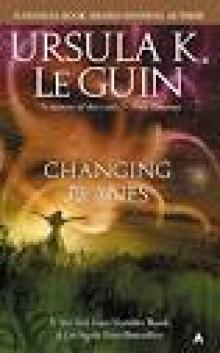 Ursula K. Le Guin
Ursula K. Le Guin Dangerous People
Dangerous People Worlds of Exile and Illusion: Rocannon's World, Planet of Exile, City of Illusions
Worlds of Exile and Illusion: Rocannon's World, Planet of Exile, City of Illusions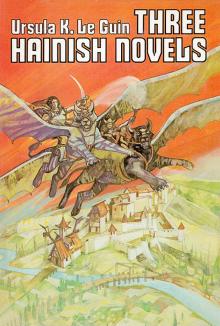 Three Hainish Novels
Three Hainish Novels The Left Hand Of Darkness (SF Masterworks)
The Left Hand Of Darkness (SF Masterworks) The Unreal and the Real - Vol 1 - Where On Earth
The Unreal and the Real - Vol 1 - Where On Earth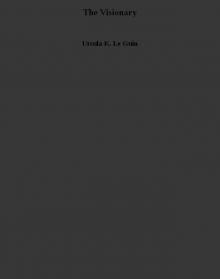 The Visionary
The Visionary The Ones Who Walk Away from Omelas
The Ones Who Walk Away from Omelas The Word for World is Forest
The Word for World is Forest Always Coming Home
Always Coming Home The Unreal and the Real - Vol 2 - Outer Space, Inner Lands
The Unreal and the Real - Vol 2 - Outer Space, Inner Lands Malafrena
Malafrena The Lathe of Heaven
The Lathe of Heaven Five Ways to Forgiveness
Five Ways to Forgiveness The Eye of the Heron
The Eye of the Heron Four Ways to Forgiveness
Four Ways to Forgiveness Powers
Powers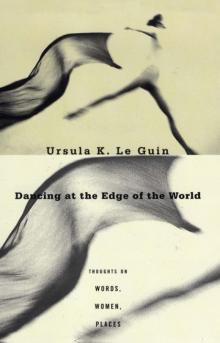 Dancing at the Edge of the World
Dancing at the Edge of the World Very Far Away from Anywhere Else
Very Far Away from Anywhere Else Voices aotws-2
Voices aotws-2 The New Atlantis
The New Atlantis The Unreal and the Real, Selected Stories of Ursula K. Le Guin Volume 1: Where on Earth
The Unreal and the Real, Selected Stories of Ursula K. Le Guin Volume 1: Where on Earth The Telling
The Telling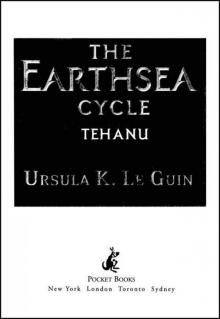 Tehanu (Earthsea Cycle)
Tehanu (Earthsea Cycle) Nine Lives twtq-9
Nine Lives twtq-9 The Birthday of the World and Other Stories
The Birthday of the World and Other Stories The Dispossessed
The Dispossessed Changing Planes
Changing Planes Words Are My Matter
Words Are My Matter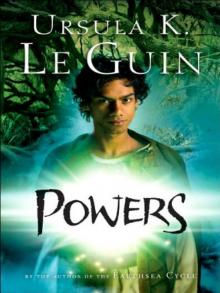 Powers aotws-3
Powers aotws-3 Lavinia
Lavinia The Wind's Twelve Quarters
The Wind's Twelve Quarters Orsinian Tales
Orsinian Tales Gifts aotws-1
Gifts aotws-1 Coming of Age in Karhide
Coming of Age in Karhide The Books of Earthsea: The Complete Illustrated Edition
The Books of Earthsea: The Complete Illustrated Edition The Found and the Lost
The Found and the Lost No Time to Spare
No Time to Spare Voices
Voices The Wild Girls
The Wild Girls Old Music and the Slave Women
Old Music and the Slave Women The Daughter of Odren
The Daughter of Odren A Fisherman of the Inland Sea: Stories
A Fisherman of the Inland Sea: Stories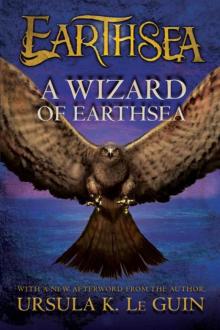 A Wizard of Earthsea (The Earthsea Cycle)
A Wizard of Earthsea (The Earthsea Cycle)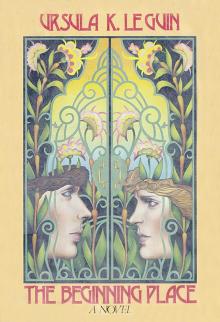 The Beginning Place
The Beginning Place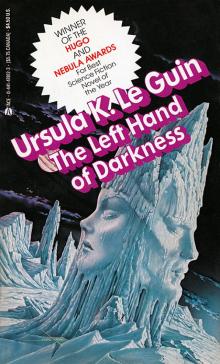 The Left Hand of Darkness
The Left Hand of Darkness The Farthest Shore (Earthsea Cycle)
The Farthest Shore (Earthsea Cycle) The Matter of Seggri botw-2
The Matter of Seggri botw-2